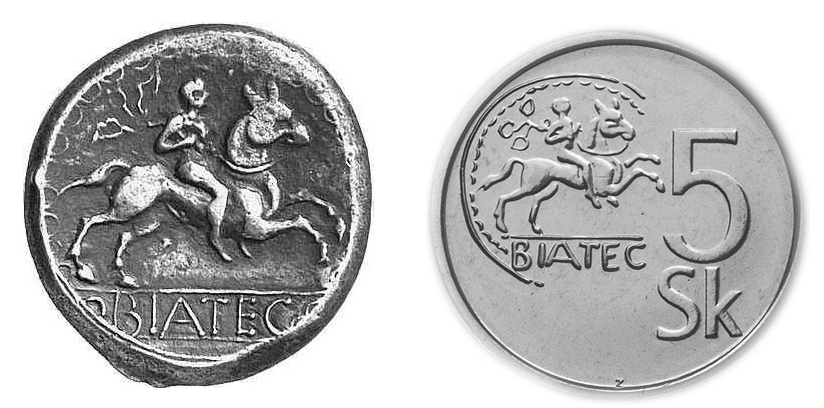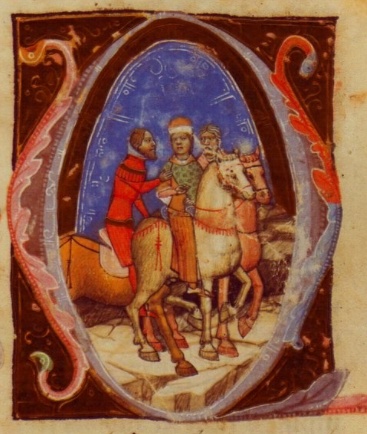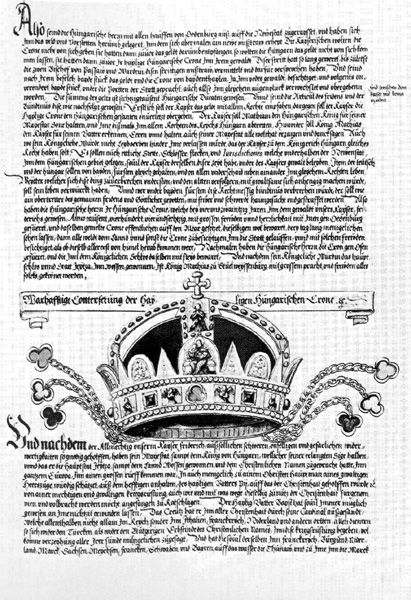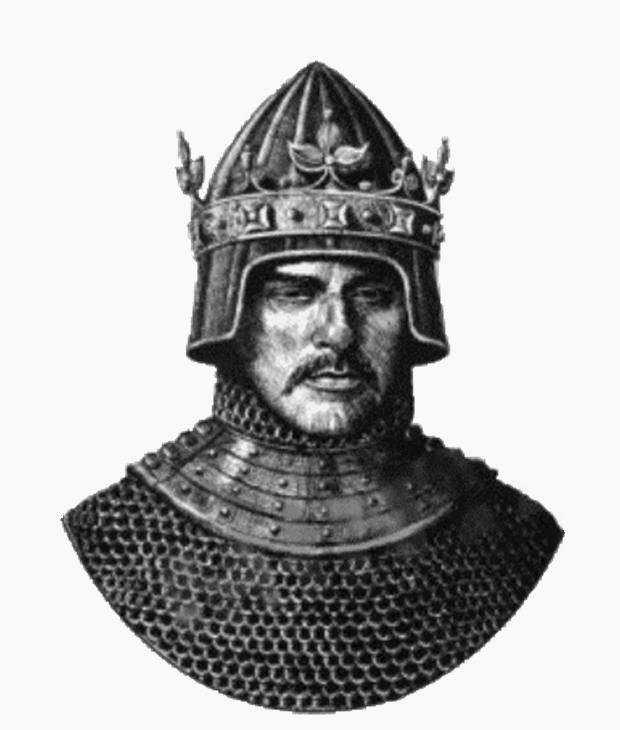|
Benedict, Bishop Of Transylvania
Benedict ( hu, Benedek; died late 1319 or early 1320) was a Hungarian Dominican friar and prelate at the turn of the 13th and 14th centuries, who served as Bishop of Transylvania from 1309 until his death. Early life Benedict joined the Dominican Order at his young age, as a result contemporary documents styled him as "''frater''" throughout his whole life. His parentage is unknown. A papal document emphasizes his skills and literacy in science and theology. It is possible, he is identical with that ''lector'' Benedict, who appears in a source in 1295. Later, he elevated into the position of prior of the Dominican monastery in Gyulafehérvár (present-day Alba Iulia, Romania). In this capacity, he was an adviser and confidant ("''amicus ac consiliarius''") of the influential prelate, Peter Monoszló, who served as Bishop of Transylvania from the 1270s. Thereafter, he was transferred to the Dominican monastery of the Assumption of the Blessed Virgin Mary at Buda Island, where he fu ... [...More Info...] [...Related Items...] OR: [Wikipedia] [Google] [Baidu] |
Roman Catholic Archdiocese Of Alba Iulia
:''There is also a Romanian Orthodox Archbishop of Alba Iulia and a Greek Catholic Archdiocese of Făgăraş and Alba Iulia.'' The Roman Catholic Archdiocese of Alba Iulia ( hu, Gyulafehérvári Római Katolikus Érsekség) is a Latin Church Catholic archdiocese in Transylvania, Romania. History It was established as a bishopric, the diocese of Transylvania also called Erdély (in Hungarian), or Karlsburg alias Siebenbürgen (in German), in 1009 by King Stephen I of Hungary and was renamed as the diocese of Alba Iulia on 22March 1932. It was raised to the rank of an archdiocese by Pope John Paul II on 5August 1991. It is exempt, i.e. directly subordinate to the Vatican, while the other Romanian dioceses form the Ecclesiastical Province of Bucharest. Bishops Ordinaries ;Bishops *Baranus (1139) *Paul (1181) *Adrian (1192–1201) * Artolf (1244–1245) * Peter Monoszló (1270–1307) *Benedict (1309–1319) *Demetrius (1368–1376) * János Statileo (1534–1542) * Pál Bornem ... [...More Info...] [...Related Items...] OR: [Wikipedia] [Google] [Baidu] |
Canon Law Of The Catholic Church
The canon law of the Catholic Church ("canon law" comes from Latin ') is "how the Church organizes and governs herself". It is the system A system is a group of Interaction, interacting or interrelated elements that act according to a set of rules to form a unified whole. A system, surrounded and influenced by its environment (systems), environment, is described by its boundaries, ... of laws and canon law, ecclesiastical legal principles made and enforced by the Hierarchy of the Catholic Church, hierarchical authorities of the Catholic Church to regulate its external organization and government and to order and direct the activities of Catholics toward the mission of the Church. It was the first modern Western legal system and is the oldest continuously functioning legal system in the West, while the unique traditions of Eastern Catholic canon law govern the 23 Eastern Catholic Churches, Eastern Catholic particular churches ''.'' Positive ecclesiastical laws, based directly o ... [...More Info...] [...Related Items...] OR: [Wikipedia] [Google] [Baidu] |
Ladislaus IV Of Hungary
Ladislaus IV ( hu, IV. (Kun) László, hr, Ladislav IV. Kumanac, sk, Ladislav IV. Kumánsky; 5 August 1262 – 10 July 1290), also known as Ladislaus the Cuman, was King of Hungary and Croatia from 1272 to 1290. His mother, Elizabeth, was the daughter of a chieftain from the pagan Cumans who had settled in Hungary. At the age of seven, he married Elisabeth (or Isabella), a daughter of King Charles I of Sicily. Ladislaus was only 10 when a rebellious lord, Joachim Gutkeled, kidnapped and imprisoned him. Ladislaus was still a prisoner when his father Stephen V died on 6 August 1272. During his minority, many groupings of barons — primarily the Abas, Csáks, Kőszegis, and Gutkeleds — fought against each other for supreme power. Ladislaus was declared to be of age at an assembly of the prelates, barons, noblemen, and Cumans in 1277. He allied himself with Rudolf I of Germany against Ottokar II of Bohemia. His forces had a preeminent role in Rudolf's victory over O ... [...More Info...] [...Related Items...] OR: [Wikipedia] [Google] [Baidu] |
Székesfehérvár
Székesfehérvár (; german: Stuhlweißenburg ), known colloquially as Fehérvár ("white castle"), is a city in central Hungary, and the country's ninth-largest city. It is the Regions of Hungary, regional capital of Central Transdanubia, and the centre of Fejér county, Fejér County and Székesfehérvár District. The area is an important rail and road junction between Lake Balaton and Lake Velence. Székesfehérvár, a royal residence (''székhely''), as capital of the Kingdom of Hungary, held a central role in the Middle Ages. As required by the Doctrine of the Holy Crown, the first kings of Hungary were crowned and buried here. Significant trade routes led to the Balkans and Italy, and to Buda and Vienna. Historically the city has come under Ottoman Empire, Ottoman and Habsburg monarchy, Habsburg control, and was known in many languages by translations of "white castle (other), white castle" – hr, Stolni Biograd, german: Stuhlweißenburg, la, Alba Regia, ota, ... [...More Info...] [...Related Items...] OR: [Wikipedia] [Google] [Baidu] |
Thomas II, Archbishop Of Esztergom
Thomas ( hu, Tamás; died 1321) was a prelate in the Kingdom of Hungary in the first half of the 14th century. He was Archbishop of Esztergom between 1305 and 1321. He was a confidant of Charles I of Hungary, whom he has supported in his unification war against the provincial lords. He crowned Charles twice, in June 1309 and August 1310. Early career Thomas was born into an illustrious family. His maternal uncle was Lodomer, the Archbishop of Esztergom from 1279 to 1298, who was a loyal supporter of Andrew III of Hungary. Due to his uncle's influence and intervention, by 1291, Thomas elevated into the provostry of Szenttamás (lit. "Saint Thomas" after Thomas Becket), which laid nearby Esztergom. Thereafter Lodomer sent his nephew to the University of Padua to learn canon law and theology. Thomas already resided in Padua on 3 June 1291, according to a university record. There he obtained the title of ''magister''. Returning home in 1293, he was appointed grand provost of Esztergom ... [...More Info...] [...Related Items...] OR: [Wikipedia] [Google] [Baidu] |
Bratislava
Bratislava (, also ; ; german: Preßburg/Pressburg ; hu, Pozsony) is the capital and largest city of Slovakia. Officially, the population of the city is about 475,000; however, it is estimated to be more than 660,000 — approximately 140% of the official figures. Bratislava is in southwestern Slovakia at the foot of the Little Carpathians, occupying both banks of the River Danube and the left bank of the River Morava. Bordering Austria and Hungary, it is the only national capital that borders two sovereign states. The city's history has been influenced by people of many nations and religions, including Austrians, Bulgarians, Croats, Czechs, Germans, Hungarians, Jews, Romani, Serbs and Slovaks. It was the coronation site and legislative center and capital of the Kingdom of Hungary from 1536 to 1783; eleven Hungarian kings and eight queens were crowned in St Martin's Cathedral. Most Hungarian parliament assemblies were held here from the 17th century until the Hunga ... [...More Info...] [...Related Items...] OR: [Wikipedia] [Google] [Baidu] |
Interdict
In Catholic canon law, an interdict () is an ecclesiastical censure, or ban that prohibits persons, certain active Church individuals or groups from participating in certain rites, or that the rites and services of the church are banished from having validity in certain territories for a limited or extended time. Before 1917 1917 Code of Canon Law Distinctions Under the 1917 Code of Canon Law, interdicts were either ''personal'', if applied directly to a person, wherever this person was, or ''local'', if applied directly to a locality and only indirectly to the people in that place whether permanently or only on a visit. Only the Holy See was empowered to impose a general interdict on a diocese or State or a personal interdict on the people of a diocese or country, but bishops too could impose a general interdict on a parish or on the people of a parish or a particular interdict on a place (such as a church or oratory, an altar or a cemetery) or a person. Effects A lo ... [...More Info...] [...Related Items...] OR: [Wikipedia] [Google] [Baidu] |
Henry II Kőszegi
Henry (II) Kőszegi ( hu, Kőszegi (II.) Henrik, hr, Henrik III. Gisingovac, german: Heinrich III. von Güns; died between March and May 1310) was a Hungarian influential lord at the turn of the 13th and 14th centuries. He was a member of the powerful Kőszegi family. He extended his influence over Upper Slavonia since the 1280s, becoming one of the so-called "oligarchs", who ruled their dominion ''de facto'' independently of the monarch. After the extinction of the House of Árpád, he participated in the dynastic struggles. He drew Southern Transdanubia under his suzerainty by then. He served as Ban of Slavonia three times (1290–1291, 1293, 1301–1310) and Master of the treasury (1302–1305). After his death, Charles I of Hungary defeated his sons and eliminated their province in 1316. Through his two sons, Henry Kőszegi was the progenitor of the Tamási and Herceg de Szekcső noble families. Family Henry II was born into the powerful and wealthy Kőszegi family, or ... [...More Info...] [...Related Items...] OR: [Wikipedia] [Google] [Baidu] |
Charles I Of Hungary
Charles I, also known as Charles Robert ( hu, Károly Róbert; hr, Karlo Robert; sk, Karol Róbert; 128816 July 1342) was King of Hungary and Croatia from 1308 to his death. He was a member of the Capetian House of Anjou and the only son of Charles Martel, Prince of Salerno. His father was the eldest son of Charles II of Naples and Mary of Hungary. Mary laid claim to Hungary after her brother, Ladislaus IV of Hungary, died in 1290, but the Hungarian prelates and lords elected her cousin, Andrew III, king. Instead of abandoning her claim to Hungary, she transferred it to her son, Charles Martel, and after his death in 1295, to her grandson, Charles. On the other hand, her husband, Charles II of Naples, made their third son, Robert, heir to the Kingdom of Naples, thus disinheriting Charles. Charles came to the Kingdom of Hungary upon the invitation of an influential Croatian lord, Paul Šubić, in August 1300. Andrew III died on 14 January 1301, and within four mo ... [...More Info...] [...Related Items...] OR: [Wikipedia] [Google] [Baidu] |
Holy Crown Of Hungary
The Holy Crown of Hungary ( hu, Szent Korona; sh, Kruna svetoga Stjepana; la, Sacra Corona; sk, Svätoštefanská koruna , la, Sacra Corona), also known as the Crown of Saint Stephen, named in honour of Saint Stephen I of Hungary, was the coronation crown used by the Kingdom of Hungary for most of its existence; kings have been crowned with it since the twelfth century. The Crown symbolized the King's authority over the Lands of the Hungarian Crown (the Carpathian Basin), and it was a key mark of legitimacy. Through the history of Hungary, more than fifty kings were crowned with it, until 1916 and the last king Charles IV. The only kings not so crowned were Wladyslaw I, John Sigismund Zápolya and Joseph II. The enamels on the crown are mainly or entirely Byzantine work, presumed to have been made in Constantinople (present-day Istanbul, Turkey) in the 1070s. The crown was presented by the Byzantine Emperor Michael VII Doukas to the King Géza I of Hungary; both are d ... [...More Info...] [...Related Items...] OR: [Wikipedia] [Google] [Baidu] |
Transylvanian Saxons
The Transylvanian Saxons (german: Siebenbürger Sachsen; Transylvanian Saxon: ''Siweberjer Såksen''; ro, Sași ardeleni, sași transilvăneni/transilvani; hu, Erdélyi szászok) are a people of German ethnicity who settled in Transylvania (german: Siebenbürgen) in waves starting from the mid- 12th century until the mid 19th century. The legal foundation of the settlement was laid down in the Diploma Andreanum issued by King Andrew II of Hungary that is known for providing the first territorial autonomy hitherto in the history. The Transylvanian "Saxons" originally came from Flanders, Hainaut, Brabant, Liège, Zeeland, Moselle, Lorraine, and Luxembourg, then situated in the north-western territories of the Holy Roman Empire around the 1140s. After 1918 and the dissolution of Austria-Hungary, in the wake of the Treaty of Trianon, Transylvania united with the Kingdom of Romania. Consequently, the Transylvanian Saxons, together with other ethnic German sub-groups in ... [...More Info...] [...Related Items...] OR: [Wikipedia] [Google] [Baidu] |
Holy See
The Holy See ( lat, Sancta Sedes, ; it, Santa Sede ), also called the See of Rome, Petrine See or Apostolic See, is the jurisdiction of the Pope in his role as the bishop of Rome. It includes the apostolic episcopal see of the Diocese of Rome, which has ecclesiastical jurisdiction over the Catholic Church and the sovereign city-state known as the Vatican City. According to Catholic tradition it was founded in the first century by Saints Peter and Paul and, by virtue of Petrine and papal primacy, is the focal point of full communion for Catholic Christians around the world. As a sovereign entity, the Holy See is headquartered in, operates from, and exercises "exclusive dominion" over the independent Vatican City State enclave in Rome, of which the pope is sovereign. The Holy See is administered by the Roman Curia (Latin for "Roman Court"), which is the central government of the Catholic Church. The Roman Curia includes various dicasteries, comparable to ministries and ... [...More Info...] [...Related Items...] OR: [Wikipedia] [Google] [Baidu] |








